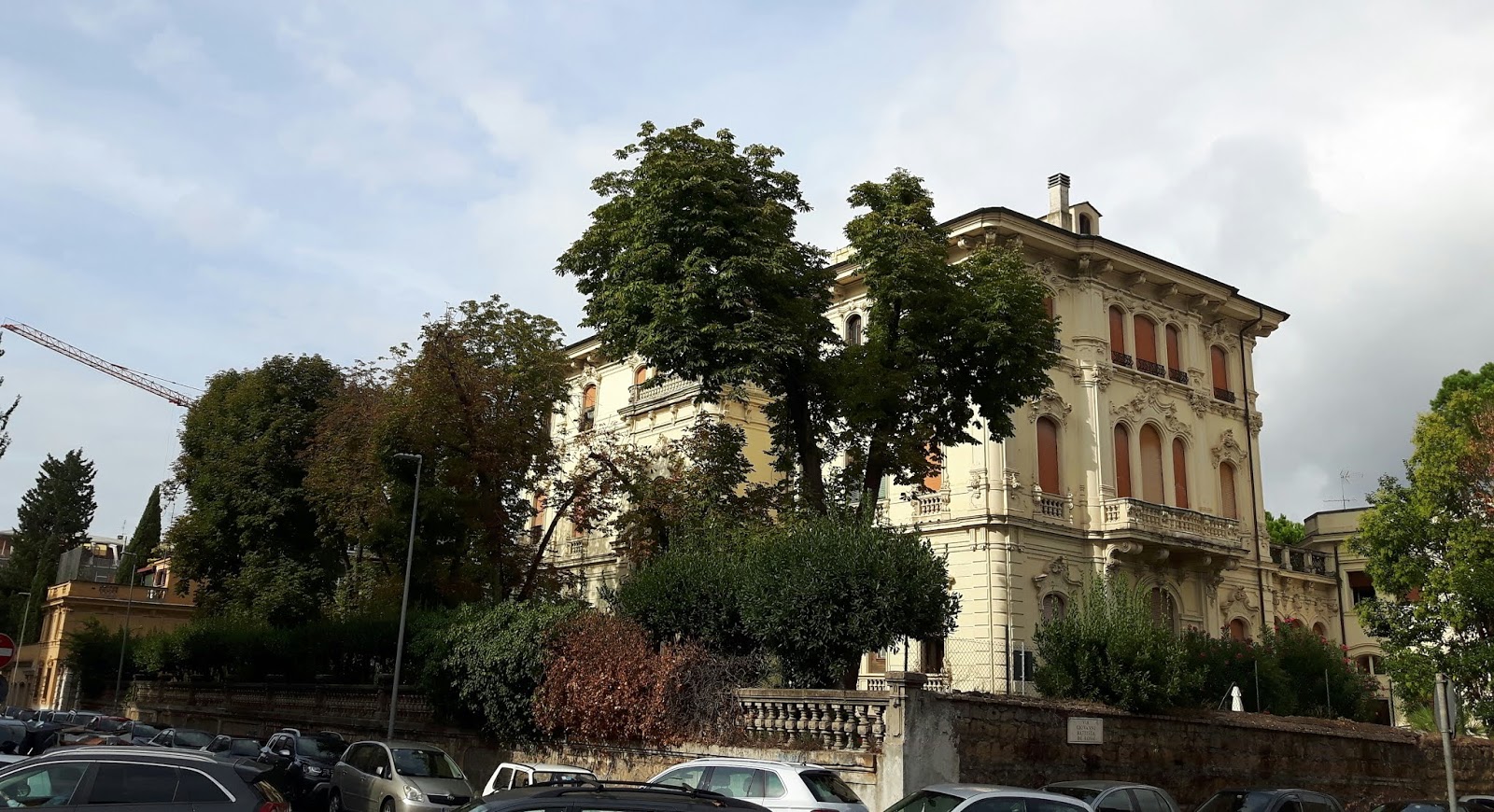



The Villino Crespi in Art Nouveau style (Italian Liberty) was built in 1908 by comm. Domenico Crespi after the subdivision of the park of Villa Mirafiori.

In 1937 it became the seat of the "Conservatory of Sant’Eufemia", a religious charity founded in the sixteenth century to help orphans and which also served as a conservatory.

The Sisters of the Most Precious Blood, founders of the conservatory, are still present in the current headquarters of the institution and run a home for the elderly here. The large building now also houses the Arts Academy foundation (International Academy of Music in Rome www.artsacademy.it), an institution for music teaching and concert production.

The entrance to the building, set back from the street front of Via Guattani, inside a small garden preceded by an imposing wrought iron gate, is characterized by an arched portico, with an overhanging terrace which also shelters the ramp of access once used by carriages.

Compared to the other contemporary villas in the neighborhood, the central recess on the facade is particular, just above the portico and balcony at the entrance.

The main building, in Baroque style, has three floors marked by impressive string courses with windows adorned with balustrades and surmounted by eighteenth-century stucco frames with scrolls and festoons. Inside you can admire numerous and splendid works of art, linked to the events of the Conservatory of Sant’Eufemia.

In the Chapel of the Conservatory are preserved: an Annunciation (ca 1580) attributed to Cesare Nebbia and from the Church of S. Urbano; a canvas with S. Eufemia (1631-1633) by Andrea Camassei, formerly in the church of S. Eufemia (destroyed in 1812); a reliquary head in gilded silver of Santa Martina, commissioned by Pietro da Cortona, who left his entire inheritance to the Conservatory.

In the staircase leading to the first floor of the building is the canvas with the Saints Carlo, Francesco and Nicola (first quarter of the seventeenth century) by Ottavio Leoni or Lioni known as "il Padovano", already in the demolished church of S. Urbano.

As mentioned, the exterior of the villa can be seen in many films such as 4 flies of gray velvet or Pierino strikes again. Villa Crespi is a building heavily used by the cinema. The list of films shot on site (indoors, outdoors or in the vicinity) where the presence of the building is visible in the scene is decidedly long: Romanticism (1950), Crimen (1960), La Cuccagna (1962), Rocambole (1962), Assassinio Made In Italy (1964), Il Giardino Dei Finzi-Contini (1970), The Red Sign Of Madness (1970), 4 Flies Of Gray Velvet (1971), Lisa and the Devil (1972), Hard Men (1974), The Kiss (1974), The Police Intervenes: Order To Kill (1975), The Equal Girl (1976), The Swastika In The Belly (1977), Hard To Die (1977), The Iron Prefect (1977), Beyond 'of good and evil (1977), Investigation of a Perfect Crime (1978), The underworld attacks ... the police respond (1978), Io Tigro, Tu Tigri, Egli Tigra (1978), Buone Notizie (1979), Gardenia, Il Giustiziere Della Mala (1979), Antropophagus (1980), My Wife is a Witch (1980), The Lucky Star (1980), The Salamandra (1981), My Wife Back to School (1981), The Social Worker All Pepe … And Tutto Sale (1981), Pi Erino Strikes Again (1982), Death In The Vatican (192), Stoned, Gassed, Completely Melted (1982), Eye, Evil Eye, Parsley And Fennel (1983), Once Upon A Time In America (1984), Ferragosto Ok (1986) ), Mignon E 'Partita (1988), Solo (1989), That Train from Vienna (1989), The Boys of Via Panisperna (1989), Se Non Avessi L'amore (1990), Some Ladies For Good (1990), Seven Criminals and a Dachshund (1992), Chicken Park (1994), La Famiglia Ricordi (1995).
Villino Crespi
Address: Via Giuseppe Antonio Guattani, 17, 00161
Phone: 3883295189
Site:
https://www.istitutorestauroroma.it/restauri-palazzi-storici-di-roma/49-conservatorio-di-santeufemia.htmlLocation inserted by
CHO.earth